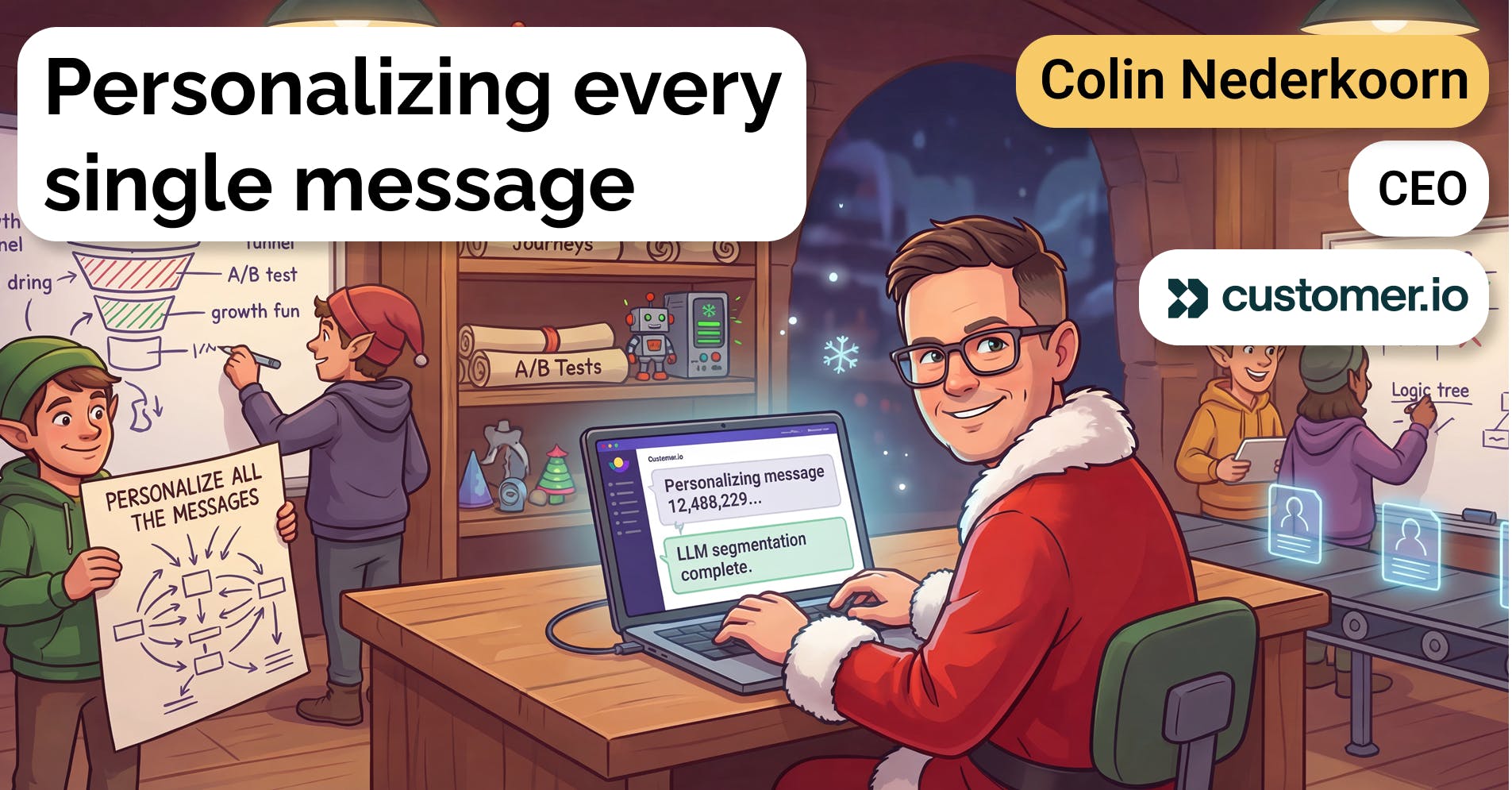Andrew Rea, CEO of Taxwire, on why enterprises need more than Stripe
 Jan-Erik Asplund
Jan-Erik Asplund

Background
With a federal court ruling opening that Apple’s App Store must allow fee-free external payment links in apps, the door is open not just for Stripe but the whole stack of Stripe-adjacent SaaS—payment orchestrators (Primer.io), regional processors (PortOne, Airwallex), and specialized tax/billing providers (Taxwire, Anrok).
We reached out to Andrew Rea, CEO of Taxwire ($3M seed raised), to learn more about how these companies think about partnering, building on, and competing with Stripe.
Key points via Sacra AI:
- Checkout friction in external linking still favors Apple’s in-app flow even at the 30% fee, but the pain line starts at $5-10M in annual revenue for developers to consider routing payments externally to their existing payment processor for web payments like Stripe or Adyen. “They have enough volume where they're thinking about doing something beyond just the App Store. Or it's a business where the App Store is only part of what they do — their product is consumed in multiple places, not just a mobile app… you might see them start to have more than one thing going on. At that point, it's probably Stripe or something like Stripe. If they're very global, they might have Stripe plus somebody else at the local level.”
- For global enterprises opting out of Apple’s in-app payments, the solution isn’t just Stripe or a single payment processor; it means bringing together a number of regional payment providers like Stripe (US), Adyen (EU), PortOne (South Korea) & Airwallex (SEA) that use local bank rails and enforce local regulation like real-time e-invoicing mandates (EU, LatAm). “One that I've been seeing more is a company called Primer.io. They aggregate PayPal, Stripe, Adyen, Worldpay — literally the long tail of PSPs. They aggregate all of them into one. You don't have to deal with all of those integrations... The world of payment providers beyond just Stripe, as you get to bigger businesses with more global customer bases, is much larger than Silicon Valley tech people realize."
- Unbundling their stack from vertically-integrated Stripe payments, billing and tax products, enterprise-level customers shift towards best-in-breed financial SaaS point solutions as they grow — for example in sales tax, adopting an independent tax layer in Taxwire, Anrok ($54M raised, Sequoia) & Avalara (acquired by Vista Equity Partners for $8.4B) that spans multiple payment processors and ledgers. “When you start moving into another billing system, another ERP, you're selling products that maybe Stripe doesn't cover, you also need something to do your filings and remittance in multiple states and countries — you quickly start hitting things that Stripe is not really built for... As you see businesses grow, there's something of an unbundling because it's very hard for one single place to do everything for a business as it grows.”
Questions
- Apple doesn't only provide distribution (saving on sales & marketing expenses) and payments but it also handles fraud, chargebacks, subscriptions, sales tax and a lot more. If that's unbundled from App Store distribution, what does that stack look like reconstructed from standalone tools?
- How do you think about the cost of that as a percent of revenue versus Apple's take rate? How about taking into account that it involves many tools that need to be orchestrated and that external linking is likely to reduce conversions to paid?
- How much of a challenge is it for your customers not to have all payments flowing through a single processor like Stripe and now that that's possible, how much of a driver is that to link externally outside of the app to do payments versus, say, lost conversions with the additional friction?
- Do you see Stripe as the center of gravity for the alternative stack?
- Talk to us about how you see the Stripe relationship. Partner? Frenemy? Competitor? How do you think about building for the Stripe ecosystem?
- What is Taxwire in short?
- For someone who doesn't really know sales tax that well, you think that sales tax and any kind of legal code is very programmatic and very complicated but, hey, you should feed it into an LLM, and they can figure out how much tax to pay. But what is the point where Stripe's solution breaks down, this point where companies need more?
- How big of a difference is there between sales tax for SaaS versus ecommerce?
- What did the incumbent Avalara get right? And what is the opportunity now with respect to them?
- We've seen the rise of more modern SaaS sales tax companies like Anrok and Numeral. How do you position against those companies and what is Taxwire's advantage?
- As a vendor that works with sales data, do you prefer it when your customers use Stripe or Adyen or another processor, or are you agnostic?
- What do you think about competing with Stripe in general?
- What do you think about companies like Finix as competitors to Stripe?
- Sales tax consists of an extremely complex set of rules across a number of local jurisdictions. Is there room for AI and nondeterministic behavior to augment or replace those rules? To the extent human judgment is involved in pursuing say more aggressive tax treatment or interpretation of rules, can AI help calibrate the customer's experience based on their preferences?
- The Wayfair ruling in 2018 on economic nexus dramatically changed the sales tax landscape as some 45 states now have economic nexus based rules on sales tax, which increased the risk of compliance on businesses. States were motivated to enact them to drive revenue. From where we sit in 2025, how impactful was that on the opportunity re sales tax SaaS, in what ways are its impacts still being felt today and what if any regulatory / compliance tailwinds do you expect over the next 5 years?
- If everything goes right for Taxwire in 5 years, what does it become and how is the world changed?
Interview
Apple doesn't only provide distribution (saving on sales & marketing expenses) and payments but it also handles fraud, chargebacks, subscriptions, sales tax and a lot more. If that's unbundled from App Store distribution, what does that stack look like reconstructed from standalone tools?
It definitely depends on size of company. I would bifurcate it into categories. For the indie folks, anybody on the indie side is probably not worrying about this yet if they're at a relatively low amount of revenue. If you're not doing at least a million a year, one to five million or something like that, it's probably not the problem to be focused on, or it doesn't seem to be what most folks are focused on yet.
Then you have businesses that are a little bit bigger. I don't know if you want to call that mid-market if you're comparing this to a more traditional market. They're not a huge enterprise. They're not Epic Games. They're not Spotify. But they have enough volume where they're thinking about doing something beyond just the App Store. Or it's a business where the App Store is only part of what they do - their product is consumed in multiple places, not just a mobile app.
Those companies, as they get past maybe one to five million, maybe five to ten million in revenue, you might see them start to have more than one thing going on. At that point, it's probably Stripe or something like Stripe. If they're very global, they might have Stripe plus somebody else at the local level. And if they're really global or they're really just trying to deal with a lot of different payments providers, we see aggregators.
One that I've been seeing more is a company called primer.io. They aggregate PayPal, Stripe, Adyen, Worldpay - literally the long tail of PSPs. They aggregate all of them into one. You don't have to deal with all of those integrations. You would just sit on top of them and use them for checkout and payment processing, building on top of one thing.
The more enterprise you go, it's probably going to be just managing multiple different payments providers, and the complexity scales. At the medium size, simplest is just pick a PSP and go with it. The way up to "we're going to need to aggregate a handful of them and deal with this" - especially if we're in multiple countries - that's when you either see them managing multiple relationships themselves or using an aggregator.
How do you think about the cost of that as a percent of revenue versus Apple's take rate? How about taking into account that it involves many tools that need to be orchestrated and that external linking is likely to reduce conversions to paid?
Conversion is a big one. The RevenueCat folks have been doing a lot of testing on what this looks like. Generally, the conversion is just more frictionless to pay on the App Store, both in terms of habits that are built, trust that's built, and it takes slightly more time because you've got to use Apple Pay when you click through the link. That actually is relatively quick, but it's not quite as frictionless as just using something on the App Store where Apple already has all of your info.
From a friction perspective, the really high impulse applications probably lead to some kind of drop in conversion. At least so far, that seems to be what the data shows. If it's a higher consideration purchase, and/or you've got a large user base and there's already some trust there, maybe some existing subscribers who are already going to pay you either way, then that's when you can start seeing people move more payments direct to some part of the stack.
But if you're small or you're very reliant on that highly impulsive purchase, the App Store is just going to be better from a conversion perspective. You're going to do the math on how much is it worth to you to save money on the margin of what you could make going off Apple versus the drop in conversion.
How much of a challenge is it for your customers not to have all payments flowing through a single processor like Stripe and now that that's possible, how much of a driver is that to link externally outside of the app to do payments versus, say, lost conversions with the additional friction?
It's more about Apple versus alternative options for these companies than it is Stripe versus others for non-App Store businesses. Apple does a lot for you. They do fraud, chargebacks, subscription billing. They handle all that for you, and taxes are a big lift. You are taking on more operational complexity and more stuff you have to manage if you don't do that.
So it's more about that comparison. Even if you just move to Stripe versus Apple, there's going to be more complexity. There are going to be more things that you have to deal with. That would definitely compound if you decide to start dealing with more payment providers, but if you've gone down that path, there's probably an economic reason for your business as to why you're doing it.
Being in the financial stack, we see that bundling makes tons of sense at a small seller level. It will continue to be a thing. But as you see businesses grow, there's something of an unbundling because it's very hard for one single place to do everything for a business as it grows. That's just a general trend you see as companies go from SMB to mid and enterprise - no one's going to use Stripe for everything, most likely.
Do you see Stripe as the center of gravity for the alternative stack?
I don't think they're the only one. This is a boon for anybody doing payments. This is probably a boon for some of the payment providers internationally that do a lot, like Adyen to some degree. This is a boom for Airwallex, I think. There are a handful that will also be winners for this, especially because a lot of consumer companies do have very global user bases. And then Stripe, definitely. Stripe is definitely a winner here, probably one of the biggest ones, as they will see more payments volume through their rails.
It's probably to a lesser degree good for some of the merchant of record businesses too. But at least for the bigger companies, I don't necessarily see them moving to merchant of record as much as you see them moving to alternate payment providers.
What would surprise people in tech that are just so familiar with Stripe is that there are a lot of payment players out there that do well for varying reasons. The world of payment providers beyond just Stripe, as you get to bigger businesses with more global customer bases, is much larger than Silicon Valley tech people realize.
Talk to us about how you see the Stripe relationship. Partner? Frenemy? Competitor? How do you think about building for the Stripe ecosystem?
There are slight bits of frenemy, but I don't really view them as a hardcore competitor. Stripe plays and what Stripe is good at is exceptional, and I have a lot of admiration for the company.
My hot take version is this: if you think that Stripe is going to eat the entire stack of payments, billing, tax, subscription, revenue reporting for mid market and eventually enterprise businesses, then you should probably short my business and many other businesses like it. If you think that Stripe is really good at what they do and will own some of those things, but as businesses grow, they're going to need more than just Stripe, and Stripe is not going to be good at doing all of those pieces together, you should probably be long businesses like ours.
It's not just Taxwire and sales tax. There are a lot of billing providers that aren't Stripe that have products that are competitive with Stripe, but they also integrate with Stripe because Stripe is still payments. A lot of us have this relationship with Stripe where you're going to be doing business in their ecosystem. Sometimes that will mean you're in a deal where maybe someone's considering Stripe as a part of their stack as well as you. But more than not, we're optimizing for a thing that Stripe isn't really optimizing for. So it's either completely complementary or only somewhat competitive, and the competitiveness is limited to specific situations.
What is Taxwire in short?
We're a global transaction tax engine and compliance platform. For those familiar with this space, you know there's a lot of complexity to both US sales tax and international VAT/GST - both calculations and actual compliance, filing and reporting tax, getting tax assigned correctly depending on what you sell.
We're more focused on the mid-market and enterprise side of things. Our founding story is essentially that I used Avalara a couple years ago after a pretty not amazing implementation. I spent a lot of time getting way deeper into sales tax than I ever thought I would, and that led to ultimately starting the company in December 2023 and raising money.
We built our team before it got started. Our head of tax built TaxJar's engine. He was pretty involved in building what is now Stripe Tax, and then another company in the space. We have some folks on the team that were at Fonoa, which is pretty big in international tax compliance - they work with Uber, Netflix, Zoom, doing VAT and e-invoicing.
We built a team that very much understands the complexity of this as you get to larger and larger customer bases. We built a tax engine that allows you to do these taxes from the ground up with all of our own rates data and tax logic, and do it highly accurately at a large degree of volume, both for the calculation, but also the filing and remittance in US states and countries around the world.
It's one of those big sleepy markets that's not super sexy. With the Stripe thing as a parallel, Stripe does have its foot in the space having acquired TaxJar, having Stripe Tax. There is a little bit of frenemies there.
For someone who doesn't really know sales tax that well, you think that sales tax and any kind of legal code is very programmatic and very complicated but, hey, you should feed it into an LLM, and they can figure out how much tax to pay. But what is the point where Stripe's solution breaks down, this point where companies need more?
Stripe Tax is expensive. That's part of it. Stripe Tax is a good product, very expensive, and it's a limited solution. It plays very well with things inside of the Stripe ecosystem. When you start moving into another billing system, another ERP, you're selling products that maybe Stripe doesn't cover, you also need something to do your filings and remittance in multiple states and countries - you quickly start hitting things that Stripe is not really built for.
If you're doing most of your business in Stripe and you just need something to calculate sales tax on a subscription, Stripe's great for that. It's amazing. But if you want something to do this in multiple different systems, to handle a larger degree of complexity of what you sell, and actually automate the compliance work too, you're probably going to end up working with another solution beyond just Stripe.
They did buy TaxJar. Theoretically at one point, and I'm now speculating, I think they thought they were going to do that whole stack. Increasingly, if you've watched what's happened with the TaxJar acquisition, I think Stripe is going less in that direction than they may have been planning to a few years ago.
Most of the people that were maintaining TaxJar are gone at this point. They're really not investing in that product and that ecosystem. They've also opened their integrations with multiple tax partners besides just TaxJar. They're working with us, Anrok, Avalara, a long tail of different companies. If Stripe was planning to own all of this, maybe they wouldn't box everyone out, but they're certainly not making effort to keep everyone else out of the ecosystem.
From a TaxJar perspective, people don't really go to that solution anymore. You see people more leaving it than joining. There's not a lot of investment in maintaining the product and the support. It's not a dead company, but it definitely seems like a company that is frozen in time.
How big of a difference is there between sales tax for SaaS versus ecommerce?
The businesses are different, but fundamentally you're solving the same core compliance problem. With SaaS, nuances come into the fact that they get more complex billing systems and revenue structures. They go global. It's the billing and financial complexity, and the global nature of the business that compounds faster than you would typically see with ecommerce.
A SaaS company doing $10 million in revenue is probably using another billing system, maybe starting to think about an ERP. They might have a B2B side. They might have a B2C side. They're global. A $10-20 million Shopify brand looks more like an SMB - probably a couple people just doing everything through Shopify, maybe Amazon as well.
Since everything's so centralized to Shopify, doing sales tax is relatively simple. There are a lot of options now like Numeral, and obviously Avalara has been in there for a while. Shopify has a filing product they launched recently. There are a lot of options in that space. It's a relatively simple product and use case, partially because of Shopify Tax. Shopify Tax is rumored to be built on top of Avalara, but they handle a lot of the tax calculation complexity. So the merchant themselves, while they pay for it, Shopify Tax takes that piece to some degree.
The complexity in ecommerce is really only for mid-market and up brands where they're doing a lot more than just Shopify, and they've got a longer tail of places that they sell. Maybe they're doing something more custom, or they're a marketplace selling in 12 different ecosystems. If you're just talking about the long tail of ecommerce, it's in many ways easier, but largely because of products that Shopify has built.
What did the incumbent Avalara get right? And what is the opportunity now with respect to them?
I admire Avalara a lot. Our ambition is to build an Avalara killer. But to this day, they are the dominant vendor in mid-market US sales tax compliance, to a lesser degree international. They've got something of an enterprise presence, but if you get higher there's Vertex and Thomson Reuters and some other folks.
The thing they did well is that they saw the market before everybody else. It was very controversial to build cloud software for SMBs and mid-market companies in 2002-2004 when they started. Sales tax was a smaller problem. People thought that was only an enterprise problem. They saw that the laws were going to change and this was going to become a much bigger problem for many more companies.
They were very good at distribution. They were really good at building channel partnerships with NetSuite, Shopify, other places as those ecosystems took off. And then they bought a ton of companies. It's almost like a Worldpay model - if you study Worldpay, they got so big because they bought a ton of different PSPs in different industries, different geographies, and rolled it up into one thing. Adyen's counterposition has been that they built it all in one stack.
If you look at Avalara, they made 20-something acquisitions - buy a telecom product, buy a product here, buy an international product, buy something for this segment of the market, this enterprise thing. It is one system but not. That was both a strength in that they can do everything and solve a long range of problems. You can still go to Avalara, and they've got something for your problem for sure for almost anybody.
The downside is that there's a lot of technical debt. It's very hard to actually integrate all of those things. It's very hard to actually automate the end thing you claim to automate - keeping on top of taxes and filing taxes.
In a post-private equity acquisition role, the incentives change. Private equity is more focused on raising EBITDA. There's less focus on R&D. You still have churn of key people, and I think you start seeing those technical problems and lack of innovation around the product itself. That's where you start to see things decline and where you've seen increased frustration with some customers with Avalara today.
We've seen the rise of more modern SaaS sales tax companies like Anrok and Numeral. How do you position against those companies and what is Taxwire's advantage?
I have a lot of respect for both of those companies. The amazing thing about huge markets, and the downside maybe to some people, is that they're highly competitive. The great thing is there's a lot of free R&D and you can learn from other exceptional companies.
Anrok was early to seeing that SaaS companies were not compliant and that Avalara was so bad that you could compete there. They built an exceptional product for those companies, and I have a lot of admiration for that team.
Their limitations are that they're very limited to US sales tax just for SaaS. They've really struggled to move into anybody dealing with physical products or some more complex enterprise-grade use cases even within SaaS. And they're limited internationally. But they're very good at that US SaaS startups and mid-market companies - great product for that and a lot of integrations.
Numeral is exceptional at growth marketing, and they built a very easy to onboard and implement product in Shopify. That's really where probably 90% of their customers are, and they're doing exceptionally well.
For those ecosystems, they're both great companies, great products. For Taxwire, our take on the space is that while there's money in the simple use cases like SaaS startups or long-tail Shopify, it's a relatively easy product to build partially because of the ecosystem. Simple customers don't need all of the complexity or don't care frankly about the compliance quality. You can just build on top of the platforms, which saves you work. For Shopify, for example, you don't have to build a tax engine. You just have to build a filing layer on top of Shopify Tax.
I think there's a lot of money to be made there, but in the long term, most of the spend and the lower churn and the complexity is in mid-market and enterprise. Our take has been that if you want to attack that market (not just the simple use cases) you have to completely rebuild the tax engine, taking a more Worldpay-like model where we rebuilt the whole stack of what Avalara is. We just spent the last year and a half doing that and built the team to do it.
Our belief is that while we definitely have some overlap and will compete with the Anroks and the Numerals of the world, we are pushing more into the mid-market enterprise stack, and we want to eat that. We think about where the majority of the value is and where we have a right to win.
Like anything in software, things converge over time. If you ask me in five years, I'm sure everybody will converge to some extent. There will be consolidation, and then we'll see how things look when that time comes.
As a vendor that works with sales data, do you prefer it when your customers use Stripe or Adyen or another processor, or are you agnostic?
No. I'm agnostic to PSP. The only thing is it's nice if you have the integration already because it's less stuff to build. But generally speaking, we don't really care what billing, ERP, or PSP someone is using.
We kind of like it. In a way, for our business, more options are good. Maybe not too many options, but it's not bad. I think if there was one dominant vendor, you probably would see more likelihood of this all getting consolidated around that player.
What do you think about competing with Stripe in general?
I have so much respect for Stripe, but there's a sense in Silicon Valley that no one wants to compete with Stripe. I actually just think Stripe is very beatable upmarket. Some of the things they do very well become problems as you go upmarket. They're not really built super well for more mid-market accounting finance use cases. The customization and support level some of these companies want and need are different.
In complex payments or complex industries where you're in a niche vertical, you see a lot of companies - like Finix just on the payment side alone - have success competing with them. Same thing in the billing stack.
Stripe's a fantastic company. People view them as impractical sometimes. In a world that's very big, not everyone's buying consideration is just like the startup that just raised their seed round or their Series A and is still doing everything on Stripe.
Not to their existence because it's more that they have found a hole in the market that Stripe doesn't fill well. I don't believe they'll be bigger than Stripe, but Adyen has strengths that Stripe doesn't in enterprise and more international payments. Finix has found strengths in mid-market and very specific complexities of certain types of businesses.
One of which is that they sell to a lot of people who are white labeling payments. If you talk to those companies, fees and cost matter. Stripe is not where you want to go if you want to really drive down your payments level if you're in a margin business.
Finix has found parts of the market that Stripe just doesn't do well right now, and honestly, I don't think Stripe is well positioned to do well without very much changing something in their strategy. It's more that than "these companies are going to kill Stripe."
I'm not bearish on Stripe. I'd say I'm long Stripe, but I'm not long to the max like some people who think it's going to eat the entire financial stack. I'm a little more moderate where I'm long them, but I'm also long this, this, and this.
Sales tax consists of an extremely complex set of rules across a number of local jurisdictions. Is there room for AI and nondeterministic behavior to augment or replace those rules? To the extent human judgment is involved in pursuing say more aggressive tax treatment or interpretation of rules, can AI help calibrate the customer's experience based on their preferences?
There's a lot of excitement right now around AI in general and especially AI in older domains like taxes. What AI is really good at as it relates to B2B products like this in taxes is taking unstructured data and turning it into something structured, or taking something very complex and making it simple. Contextualization is the right word.
For transaction-based taxes where you need a very specific, very precise output, language models still hallucinate. That's not what they're best at right now. You need a deterministic rules engine to do that. But building a rules engine, especially in Sales Tax, historically required hiring an army of tax researchers - literally tax attorneys. They spent a lot of time doing tax research in statutes, manually taking stuff out of PDFs and scraping, going through it in Excel, turning this into something an engine can work with, translating it, writing code to get it in there, and then doing the same process to keep it updated.
Imagine doing that for the entire US sales tax code, let alone global taxes as you get international with language differences. You're trying to standardize something that's fundamentally not standardized. That's one reason why it's historically been hard to fully unseat companies like Avalara, Vertex, Thomson Reuters.
Today, you can't just one-shot a prompt in ChatGPT or Claude or Cursor to build a tax engine. But what AI is very good at doing is if you pair it with the right structure of an engine, you can start speed-running the process of taking the unstructured data of the tax code and putting it into your engine.
We shipped physical/digital product coverage for international markets - the EU, UK, Australia, Canada, and a few other countries - in a couple weeks. The right person with AI can speed-run through a lot of this tax research and turn it into something your engine can use.
On the implementation side, for a customer, there's tons of unstructured stuff from different systems - their business systems, the products they sell, all these SKUs, the contracts they have, the invoices, how that language is written. AI is very good at taking that data and unstructured context and putting it into a structure that can do the tax correctly in the rules engine.
For us, that means we can automatically pull in invoices or hundreds or thousands of products and just have them categorized. You just have to look at it and make sure you trust it as the controller or CFO. It's good at use cases like that.
Previously, a lot of these products were black boxes. But now if you are a user of Taxwire, instead of just seeing you have a bunch of transactions where taxes apply but not knowing why, you can now see contextualization of tax implications across your transactions and your business, which was really hard to do before.
If you look at cards, Ramp is a good example of someone who's done a really good job of this because they control a very deterministic rail. You can input intelligence on top of that and trust it a lot more. Determining the rails and combining intelligence on top of that is really what gets interesting in finance/tax/accounting use cases.
I can't bring myself to say "Taxwire.AI" and claim we're basically a tax LLM company. We're not training our own foundation models. But this is what we've seen and implemented, and it has me pretty jazzed. Maybe I will feel less jazzed if in two years you can just one-shot a tax engine, and then maybe I'm out of business. But for now, I'm very happy when I see the models get better.
The Wayfair ruling in 2018 on economic nexus dramatically changed the sales tax landscape as some 45 states now have economic nexus based rules on sales tax, which increased the risk of compliance on businesses. States were motivated to enact them to drive revenue. From where we sit in 2025, how impactful was that on the opportunity re sales tax SaaS, in what ways are its impacts still being felt today and what if any regulatory / compliance tailwinds do you expect over the next 5 years?
I would say regulatory change is usually a tailwind for someone, especially in a business like ours. If you expect there to be change, it's usually going to end up being favorable for you, with some exceptions.
Wayfair was and continues to be one of the biggest tailwinds. It's interesting that you would have thought, being seven years ago, it would be done now, but it takes a couple years for states to implement and then it takes time for people to actually start complying, and then it takes time for there to be enforcement.
It has really expanded the market, both of US companies and companies internationally selling into the US. I continue to be shocked at how much movement from not compliant to compliant there is. It's a huge tailwind that will continue.
A more emergent trend in the United States is states getting rid of or decreasing income taxes. A lot of states are in difficult budgetary spots. That leads to increased pressure on expanding the tax base for these states. We're seeing more states trying to tax software. We're seeing more states trying to tax services that were historically not taxed, expanding the scope of what they can tax and then expanding enforcement towards companies actually complying.
This will continue because in some cases it's just greed. In other cases, states like Illinois are in a very difficult fiscal situation. They need revenue, and frankly, if you're a politician in that state, it's better to let this happen legislatively because sales tax generally is not a thing that's going to lose you an election. Whereas if you say you want to raise income taxes, it might. So direct taxes, because of that phenomenon, are one of the few levers that you can push if you're a state or locality trying to increase revenue in the years to come. That will be more steady than Wayfair, which was big and sudden.
Internationally, taxes are changing really quickly. E-invoicing is becoming more of a thing around the world, which is essentially sharing invoices and records with the government in real time so they can move towards real-time audits. There's a trend towards real-time remittance. There's a trend towards just a lot more government insight into the entire chain of transactions.
There's a trend towards companies having to share transaction data. If you're Stripe and you're in the EU, you have to share payments on cross-border data with the EU regulatory authorities. There's also a big push for those countries to increase the complexity of compliance, but also their ability to enforce on a US company selling lots of stuff and maybe not collecting tax.
I think it's going to be harder to not comply in the years to come as a lot of these countries try to get their tax revenue. The Internet knows no borders, and governments want to make money.
If everything goes right for Taxwire in 5 years, what does it become and how is the world changed?
I think as much in five years as I do in ten and twenty. We have a lot of execution to make any of what I'm about to say real. But ideally, we want to build the Avalara killer. Avalara is respectfully on its way out of the market in the years to come.
In the future, I assume we're for mid-market and enterprise level customers, the default modern alternative for doing transaction taxes globally. So sales tax, VAT, GST - the calculations, the filings, the remittance.
In the next five years, it looks a lot like that in these bigger more complex companies across multiple industries. We'll be servicing telecom companies. We'll be servicing SaaS companies, businesses internationally selling here. We'll have a very large scope of bigger businesses dealing with their tax complexity.
I hope that by the end of those five years, we're not just doing the filings and calculations for US and international. There's a lot of services spend still around these products in bigger companies that I think can increasingly be eaten by software.
Just a lot of laborious work that's either being done by big teams or big BPOs. How do we categorize these thousands of products to get tax right so we're not double paying taxes? How do we get our absurd amount of SKUs into this deterministic tax engine to make sure we're doing tax correctly so we're not losing money? How do we avoid losing money on an audit because we're not doing tax in some part of the business correctly?
A lot of that stuff is still very human-driven. We want to eat that because we control that core data, both tax data and transaction data. Previously it would have been very hard because these are not in the vein of software. But AI on top of these things has increased the opportunity of how ambitious a company like ours can be.
Ideally, in five years, Avalara's dead, we've replaced them in mid-market and increasingly enterprise, and we're eating a lot more of the things around that, not just software, but also services.
Disclaimers
This transcript is for information purposes only and does not constitute advice of any type or trade recommendation and should not form the basis of any investment decision. Sacra accepts no liability for the transcript or for any errors, omissions or inaccuracies in respect of it. The views of the experts expressed in the transcript are those of the experts and they are not endorsed by, nor do they represent the opinion of Sacra. Sacra reserves all copyright, intellectual property rights in the transcript. Any modification, copying, displaying, distributing, transmitting, publishing, licensing, creating derivative works from, or selling any transcript is strictly prohibited.






